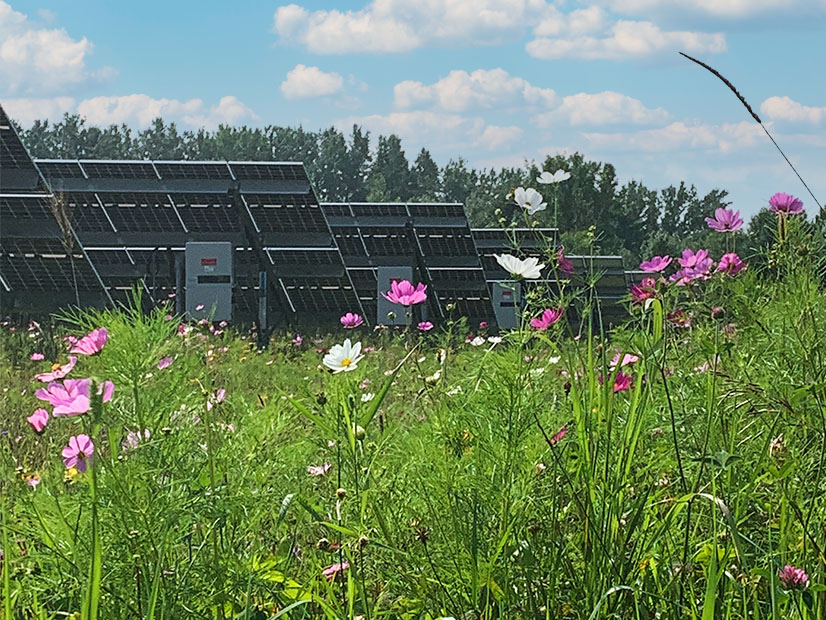
A study of EDF Renewables’ 177-MW Morris Ridge project in Western New York is gaining attention for its innovative take on designing utility-scale solar with a purposeful plan for beekeeping and honey production.
The emerging agrivoltaic practice of solar beekeeping seeks to find synergies in land use in agricultural areas, according to Mary Kate MacKenzie, business manager for Sweet Grass Meats in Naples, N.Y., and co-author of the report “Co-locating Solar and Agriculture at the Morris Ridge Solar Energy Center.”
“We’re going to be seeing a lot of change in some of our agricultural landscapes as solar expands in the coming years, so solar beekeeping is an opportunity for the same piece of land to support solar energy production as well as an agricultural enterprise,” she said during a large-scale agrivoltaics webinar hosted by United Solar Energy Supporters on Tuesday.
EDF won a contract from the New York State Energy Research and Development Authority to build the Morris Ridge solar facility on 1,000 acres of leased land previously farmed for crops, such as corn and soybeans. The developer plans to incorporate agrivoltaic practices into the project, which is slated for commissioning next year.
To support that plan, the town of Mount Morris commissioned the Morris Ridge study to understand the opportunities for sheep grazing and beekeeping on the property. The study was selected for a poster presentation at the AgriVoltaics2022 Conference in Italy in June.
“It feels pretty nice that we went from first time on the drawing board to being a poster child, you could say, for sheep and bees,” said Town Supervisor David DiSalvo. “I’m hoping we have a couple of herds and a lot of beehives to be one of the leading producers of honey in New York.”
Bee-friendly Takeaways
Honey production is an $11 million/year industry in New York, and the value of honeybee commercial pollination services can reach up to $400 million/year, according to MacKenzie.
Utility-scale solar developers interested in attracting beekeepers to their facilities can take a few key points from the Morris Ridge study, she said.
The top consideration for developers is to understand the factors that will support a strong operating profit margin for the grouping of bee colonies known as an apiary.
“Beekeepers really need a minimum honey yield for an apiary to be economically viable,” MacKenzie said. “If you, as a developer, want to recruit a beekeeper to your site, you need to convince them that the honey yield will be there.”
Predicting honey yield requires an intimate knowledge of the solar facility’s landscape composition.
Vegetation in the landscape affects honeybee productivity, including how much pollen they collect and how healthy they are, MacKenzie said. The facility needs to provide the right plants for pollen collection and not expose bees to dangerous insecticides used for crop management within their foraging range.
While the study found that the Morris Ridge site does not currently have the ideal landscape composition for a profitable apiary, EDF plans to make changes that MacKenzie said will help.
“The intent of the developer is to establish permanent pasture on the site under and around the solar panels, as well as some pollinator-friendly plantings in the buffer zones across the site,” she said.
Developers will also need to understand that their approach to the business of beekeeping will be different than how it’s traditionally done.
“Beekeepers are rural folks who take great pride in having longstanding relationships with landowners, but they’re often just handshake agreements,” MacKenzie said. The study, she added, recommends that solar developers create a mutually beneficial relationship with beekeepers through written agreements.
A survey of local beekeepers used in the study found that most respondents had positive attitudes toward solar beekeeping. One respondent, however, did not believe the landscape would have the criteria he looks for in an apiary site.
“The key here is understanding what beekeepers look for and ensuring that you can provide that and communicate that as you’re trying to recruit someone to work with you,” MacKenzie said.


